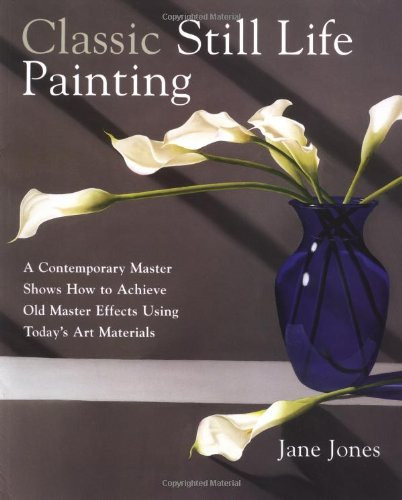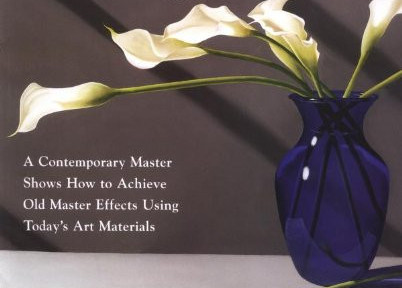This post is my review of Classic Still Life Painting: A Contemporary Master Shows How to Achieve Old Master Effects Using Today’s Art Materials by Jane Jones.
I recently read two different still life painting books because I have been in the mood to paint some still life paintings. I did some research online and ended up reading Classic Still Life Painting, and Still Life Painting Atelier. Watson-Guptill publishes both books (it seems like almost every book I read is published by Watson-Guptill).
 Classic Still Life Painting is focused on painting still lifes with transparent glazes of oil paint. Painting with transparent glazes (a la watercolor) creates luminosity not possible through strictly opaque application of paint because of the way light bounces through the paint (perhaps I’ll do a blog post about that). She covers five pages of materials for painting and then jumps right into some color theory and color palettes, also differentiating paints that are transparent and those that are opaque. Jane has some helpful tips on creating your own color charts (color charts/color notes are helpful formulas of color mixtures that the artist references to accurately re-mix paint if needed). Throughout the book, Jane shows her color notes/charts and it might seem overwhelming for the beginning oil painter. Don’t worry so much about the color mixtures that she mixes from her smorgasbord of oil paints, and instead focus on the technique she is using to paint.
Classic Still Life Painting is focused on painting still lifes with transparent glazes of oil paint. Painting with transparent glazes (a la watercolor) creates luminosity not possible through strictly opaque application of paint because of the way light bounces through the paint (perhaps I’ll do a blog post about that). She covers five pages of materials for painting and then jumps right into some color theory and color palettes, also differentiating paints that are transparent and those that are opaque. Jane has some helpful tips on creating your own color charts (color charts/color notes are helpful formulas of color mixtures that the artist references to accurately re-mix paint if needed). Throughout the book, Jane shows her color notes/charts and it might seem overwhelming for the beginning oil painter. Don’t worry so much about the color mixtures that she mixes from her smorgasbord of oil paints, and instead focus on the technique she is using to paint.
She talks about preparing a support (the surface that receives the paint), blending, using an alkyd such as Liquin, and lighting a still life. Jane primarily photographs her still life setups and paints from many different photos of the scene. She discusses some tips for photographing a still life.
Jane talks about accurately drawing and perspective in the next chapter, as well as the steps she takes to draw her demo still life. She then paints an underpainting and begins glazing many layers of paint. She shows another painting using the same methods but with slightly different elements. This continues for the rest of the book until the end where she talks about varnishing.
Something that bothered me about the book Classic Still Life Painting, is that Jane naggingly reminds the reader that they should use alkyd medium in each subsequent layer on the painting. Sure, she could mention that once, but the reader might miss it and it’s kind of important. I suppose a couple reminders are okay, but she makes a point to slip that “helpful hint” into the text so many times that it started to drive me nuts. I get it! I should use Liquin in every layer! OKAY! Additionally, after the first couple demos, the book seems a bit repetitive and I lost my interest (but that doesn’t mean you will lose interest!).
Overall, I think Classic Still Life Painting is a nice book and it can certainly be of value to beginning oil painters, watercolorists transitioning to oil painting, and artists who want to try a classical technique to paint still lifes.
Stay tuned for my next still life book review blog post where I review Still Life Painting Atelier by Michael Friel.

